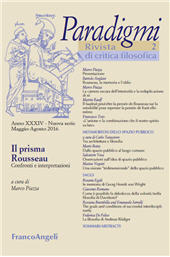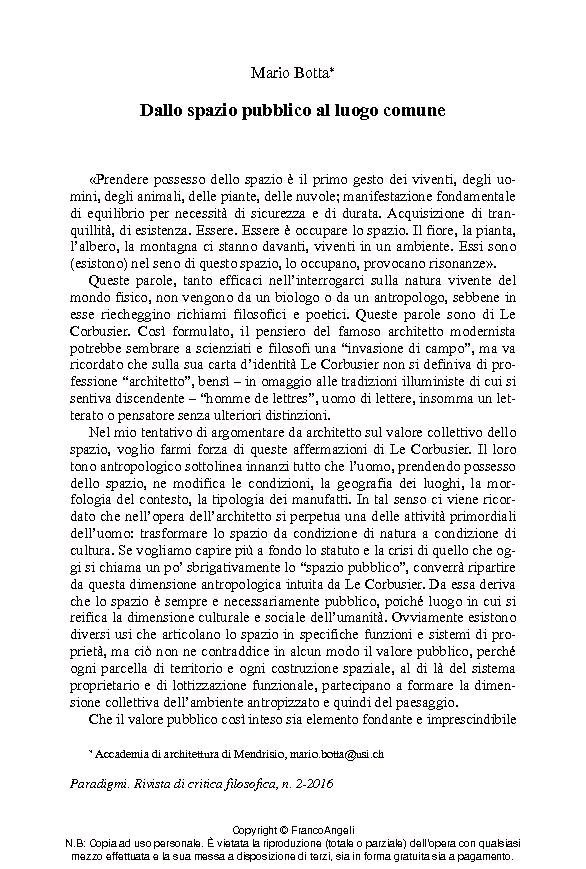Dallo spazio pubblico al luogo comune
103-107 p.
Per l'architetto lo spazio è sempre pubblico, poiché è in esso che si sviluppa la dimensione culturale e sociale dell'umanità. Nella città europea, caratterizzata da una tipica stratificazione storica, riconosciamo la nostra stessa identità. Dove è mancata, invece, questa stretta relazione, sono nati dei "non-luoghi". Vedere il "passato come un amico" è quindi un principio fondamentale. Il rapporto con il passato implica sempre quello con il tempo e il rapporto con lo spazio richiama ogni volta il contesto su cui continueranno a operare le generazioni future. La città deve continuare a parlarci come spazio pubblico: è su quest'ultima nozione, infatti, che è radicata una teoria della democrazia. Preservare lo spazio aperto al disaccordo e alle dissonanze è il compito capace di unire tanto architettura e filosofia quanto memoria e progetto. L'opera dell'architetto è pertanto anche politica. Lo spazio pubblico deve saper interpretare le esigenze sociali, collocandosi nell'intersezione tra la sfera materiale, que
lla sociale e quella politico-istituzionale. Le pratiche sociali si approprieranno poi in maniera imprevedibile degli spazi pubblici. Diritto alla città significa uguale diritto allo spazio pubblico, cosa che non accade nelle periferie delle grandi città europee. In aggiunta, i movimenti migratori pongono questioni di enorme portata che le città avranno da risolvere nel rispetto della "polifonia" che esse hanno al loro interno [Testo dell'editore].
For an architect, "space" means always "public space". In fact, it is within it that the cultural and social dimension of human nature expresses itself. In the European city, with its typical historical stratification, we recognize our own identity. In the places where this close relationship did not occur, the so-called "non-spaces" were born. One basic principle is therefore to consider "the past as a friend". Our relation with the past always implies the relationship with time, and our relation with space also refers to the context where the future generations will continue to operate. The city must keep on talking to us as a public space: a theory of democracy is rooted on this very notion. To guarantee that space will continue to be an open place where disagreement and dissonance may find some expression is a task that brings together both architecture and philosophy, both memory and project. Therefore, the work of the architect is also a political work. Public space has to give voice to social needs by.
placing itself in the intersection between the material sphere, the social sphere and the political and institutional sphere. Social practices will thereafter take possession of public spaces in an unpredictable way. "Having right to the city" means to have the same right to public space: but this does not occur in the suburbs of the big European cities. Furthermore, migration flows are challenging the cities with issues of huge importance that have to be solved by respecting the internal "polyphony" of the cities themselves. [Publisher's Text].
-
Artikel aus derselben Ausgabe (einzeln erhältlich)
-
Informationen
ISSN: 2035-357X
KEYWORDS
- Spazio pubblico, Topos, Memoria, Civitas, Contesto, Incertezza, Öffentlichkeit, Libertà democratica, Pluralismo, Pubblico-privato, Capitale sociale, Capitale culturale, Movimenti migratori
- c space, Topos, Memory, Civitas, Context, Uncertainty, Öffentlichkeit, Democratic Freedom, Pluralism, Private-Public, Social Capital, Cultural Capital, Migration Flows



